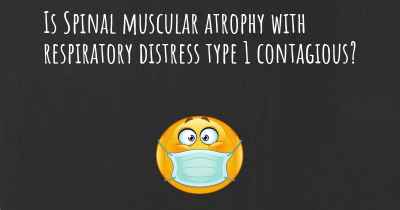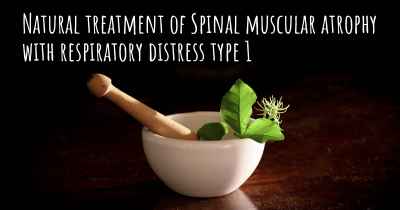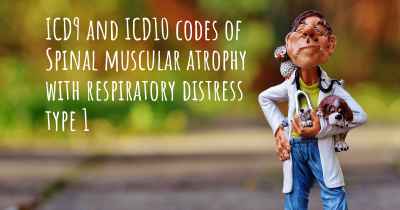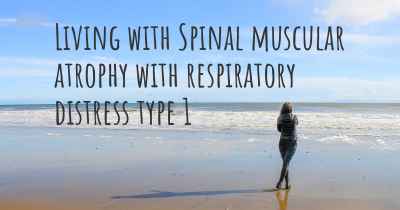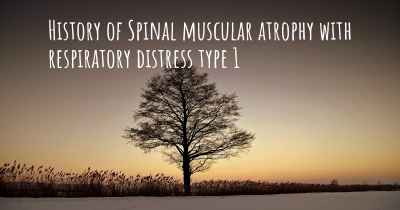Is Spinal muscular atrophy with respiratory distress type 1 hereditary?
Here you can see if Spinal muscular atrophy with respiratory distress type 1 can be hereditary. Do you have any genetic components? Does any member of your family have Spinal muscular atrophy with respiratory distress type 1 or may be more predisposed to developing the condition?
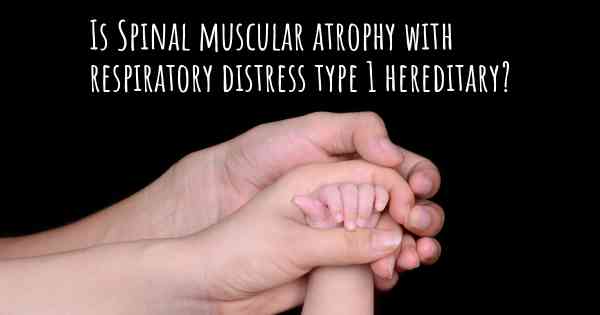
Spinal muscular atrophy with respiratory distress type 1 (SMARD1) is indeed hereditary. It is an autosomal recessive disorder, meaning that both parents must carry a mutated gene for their child to be affected. SMARD1 is caused by mutations in the IGHMBP2 gene. It primarily affects the muscles involved in breathing and can lead to respiratory distress and muscle weakness. Early diagnosis and genetic counseling are crucial for families with a history of SMARD1.
Spinal Muscular Atrophy with Respiratory Distress Type 1 (SMARD1) is a rare genetic disorder that affects the nerves controlling the muscles involved in breathing and movement. It is characterized by progressive muscle weakness and respiratory problems, typically appearing in infancy. SMARD1 is caused by mutations in the IGHMBP2 gene, which is inherited in an autosomal recessive manner.
Autosomal recessive inheritance means that an individual must inherit two copies of the mutated gene, one from each parent, in order to develop the condition. If both parents are carriers of the SMARD1 gene mutation, there is a 25% chance with each pregnancy that their child will be affected by the disorder. Carriers of the gene mutation do not typically show symptoms of SMARD1 but can pass the mutation on to their children.
Genetic testing can be performed to determine if an individual is a carrier of the SMARD1 gene mutation. This can be particularly useful for individuals with a family history of the disorder or those who are planning to have children. If both parents are carriers, they can consider various options such as prenatal testing or preimplantation genetic diagnosis to assess the risk of having an affected child.
SMARD1 is a hereditary condition and understanding the genetic basis of the disorder is crucial for accurate diagnosis and appropriate management. Early diagnosis is important as it allows for timely intervention and support for affected individuals and their families. The symptoms of SMARD1 can vary in severity, but respiratory distress is a hallmark feature of the condition.
Respiratory distress in SMARD1 is caused by the progressive degeneration of the nerves that control the muscles involved in breathing. This leads to respiratory insufficiency and can be life-threatening if not managed properly. Infants with SMARD1 may require respiratory support, such as mechanical ventilation or non-invasive ventilation, to assist with breathing. Respiratory management is a critical aspect of the care for individuals with SMARD1.
Other symptoms of SMARD1 may include muscle weakness, poor muscle tone, difficulty swallowing, and delayed motor development. The severity and progression of symptoms can vary, even among affected individuals within the same family. Some individuals may experience a milder form of the disorder, while others may have more severe symptoms and a shorter life expectancy.
Treatment options for SMARD1 are currently limited, and management primarily focuses on supportive care. This may include respiratory support, physical therapy, occupational therapy, and nutritional support. Research efforts are ongoing to develop potential therapies, including gene therapy and pharmacological approaches, to address the underlying genetic cause of SMARD1.
In conclusion, Spinal Muscular Atrophy with Respiratory Distress Type 1 (SMARD1) is a hereditary condition caused by mutations in the IGHMBP2 gene. It is inherited in an autosomal recessive manner, meaning that both parents must carry the gene mutation for their child to be affected. Genetic testing can help identify carriers and assess the risk of having an affected child. Early diagnosis and appropriate management, particularly in relation to respiratory support, are crucial for individuals with SMARD1.


